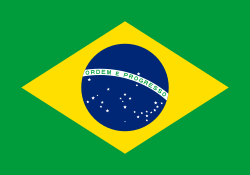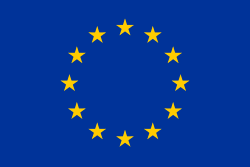Frankrikes Grand Prix 1998
| Datum | 28 juni 1998 |
|---|---|
| Bana | Circuit de Nevers Magny-Cours |
| Sträcka | 71 × 4,250 = 301,750 km |
| Vinnare | Michael Schumacher, Ferrari |
| Pole position | Mika Häkkinen, McLaren-Mercedes |
| Snabbaste varv | David Coulthard, McLaren-Mercedes, 1:17,523 |
Frankrikes Grand Prix 1998 var det åttonde av 16 lopp ingående i formel 1-VM 1998.
Rapport
Ferrari tog en överraskande dubbelseger på Magny Cours-banan, vilket var den första sedan loppet i Mexiko 1990. Att Michael Schumacher vann var inte särskilt förvånade, men att Eddie Irvine kom tvåa före Mika Häkkinen i McLaren, var däremot mycket oväntat.
Resultat
- Michael Schumacher, Ferrari, 10 poäng
- Eddie Irvine, Ferrari, 6
- Mika Häkkinen, McLaren-Mercedes, 4
- Jacques Villeneuve, Williams-Mecachrome, 3
- Alexander Wurz, Benetton-Playlife, 2
- David Coulthard, McLaren-Mercedes, 1
- Jean Alesi, Sauber-Petronas
- Johnny Herbert, Sauber-Petronas
- Giancarlo Fisichella, Benetton-Playlife
- Rubens Barrichello, Stewart-Ford
- Olivier Panis, Prost-Peugeot
- Jos Verstappen, Stewart-Ford
- Mika Salo, Arrows
- Pedro Diniz, Arrows
- Heinz-Harald Frentzen, Williams-Mecachrome (varv 68, upphängning)
- Ralf Schumacher, Jordan-Mugen Honda
- Shinji Nakano, Minardi-Ford (65, motor)
Förare som bröt loppet
- Toranosuke Takagi, Tyrrell-Ford (varv 60, motor)
- Jarno Trulli, Prost-Peugeot (55, snurrade av)
- Esteban Tuero, Minardi-Ford (41, växellåda)
- Damon Hill, Jordan-Mugen Honda (19, hydraulik)
- Ricardo Rosset, Tyrrell-Ford (16, hydraulik)
VM-ställning
Förarmästerskapet | Konstruktörsmästerskapet
|
Källor
- ”1998 Formula 1 French Grand Prix” (på engelska). Formula1.com. https://www.formula1.com/en/results.html/1998/races/678/france/race-result.html. Läst 1 maj 2015.
| ||||||||
| |||||
Media som används på denna webbplats
Kanadas flagga, införd 1965; denna version med Pantone‐nyanser. Nuvarande utformning ersatte den tidigare kanadensiska Red Ensign.
The civil ensign and flag of Belgium. It is identical to Image:Flag of Belgium.svg except that it has a 2:3 ratio, instead of 13:15.
The Flag of Europe is the flag and emblem of the European Union (EU) and Council of Europe (CoE). It consists of a circle of 12 golden (yellow) stars on a blue background. It was created in 1955 by the CoE and adopted by the EU, then the European Communities, in the 1980s.
The CoE and EU are distinct in membership and nature. The CoE is a 47-member international organisation dealing with human rights and rule of law, while the EU is a quasi-federal union of 27 states focused on economic integration and political cooperation. Today, the flag is mostly associated with the latter.
It was the intention of the CoE that the flag should come to represent Europe as a whole, and since its adoption the membership of the CoE covers nearly the entire continent. This is why the EU adopted the same flag. The flag has been used to represent Europe in sporting events and as a pro-democracy banner outside the Union.
















